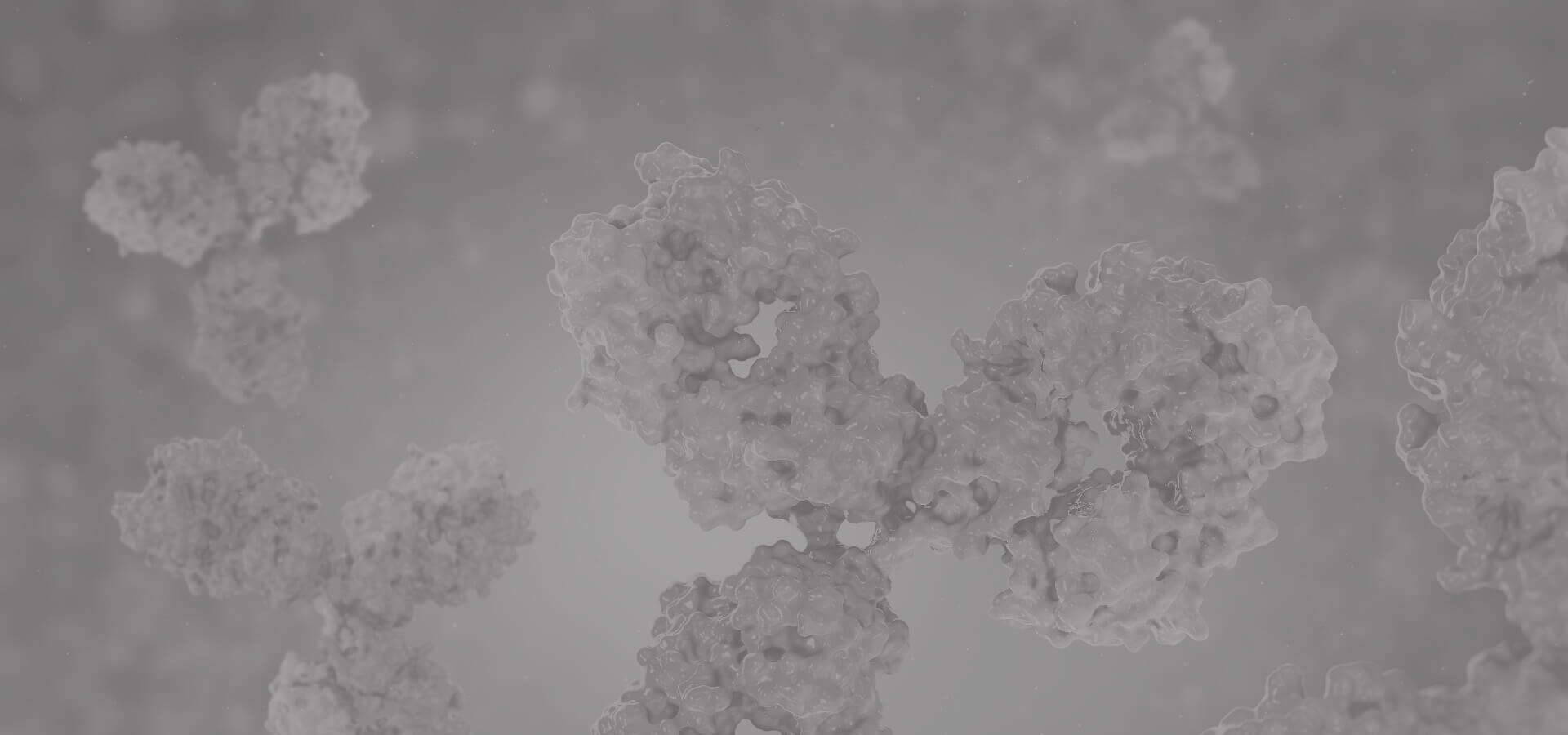YBX1
This gene encodes a highly conserved cold shock domain protein that has broad nucleic acid binding properties. The encoded protein functions as both a DNA and RNA binding protein and has been implicated in numerous cellular processes including regulation of transcription and translation, pre-mRNA splicing, DNA reparation and mRNA packaging. This protein is also a component of messenger ribonucleoprotein (mRNP) complexes and may have a role in microRNA processing. This protein can be secreted through non-classical pathways and functions as an extracellular mitogen. Aberrant expression of the gene is associated with cancer proliferation in numerous tissues. This gene may be a prognostic marker for poor outcome and drug resistance in certain cancers. Alternate splicing results in multiple transcript variants. Pseudogenes of this gene are found on multiple chromosomes. [provided by RefSeq, Sep 2015]
Full Name
YBX1
Function
DNA- and RNA-binding protein involved in various processes, such as translational repression, RNA stabilization, mRNA splicing, DNA repair and transcription regulation (PubMed:8188694, PubMed:10817758, PubMed:11698476, PubMed:14718551, PubMed:18809583, PubMed:31358969).
Predominantly acts as a RNA-binding protein: binds preferentially to the 5'-[CU]CUGCG-3' RNA motif and specifically recognizes mRNA transcripts modified by C5-methylcytosine (m5C) (PubMed:19561594, PubMed:31358969).
Promotes mRNA stabilization: acts by binding to m5C-containing mRNAs and recruiting the mRNA stability maintainer ELAVL1, thereby preventing mRNA decay (PubMed:10817758, PubMed:11698476, PubMed:31358969).
Component of the CRD-mediated complex that promotes MYC mRNA stability (PubMed:19029303).
Contributes to the regulation of translation by modulating the interaction between the mRNA and eukaryotic initiation factors (By similarity).
Plays a key role in RNA composition of extracellular exosomes by defining the sorting of small non-coding RNAs, such as tRNAs, Y RNAs, Vault RNAs and miRNAs (PubMed:27559612, PubMed:29073095).
Probably sorts RNAs in exosomes by recognizing and binding C5-methylcytosine (m5C)-containing RNAs (PubMed:28341602, PubMed:29073095).
Acts as a key effector of epidermal progenitors by preventing epidermal progenitor senescence: acts by regulating the translation of a senescence-associated subset of cytokine mRNAs, possibly by binding to m5C-containing mRNAs (PubMed:29712925).
Also involved in pre-mRNA alternative splicing regulation: binds to splice sites in pre-mRNA and regulates splice site selection (PubMed:12604611).
Also able to bind DNA: regulates transcription of the multidrug resistance gene MDR1 is enhanced in presence of the APEX1 acetylated form at 'Lys-6' and 'Lys-7' (PubMed:18809583).
Binds to promoters that contain a Y-box (5'-CTGATTGGCCAA-3'), such as MDR1 and HLA class II genes (PubMed:8188694, PubMed:18809583).
Promotes separation of DNA strands that contain mismatches or are modified by cisplatin (PubMed:14718551).
Has endonucleolytic activity and can introduce nicks or breaks into double-stranded DNA, suggesting a role in DNA repair (PubMed:14718551).
The secreted form acts as an extracellular mitogen and stimulates cell migration and proliferation (PubMed:19483673).
Predominantly acts as a RNA-binding protein: binds preferentially to the 5'-[CU]CUGCG-3' RNA motif and specifically recognizes mRNA transcripts modified by C5-methylcytosine (m5C) (PubMed:19561594, PubMed:31358969).
Promotes mRNA stabilization: acts by binding to m5C-containing mRNAs and recruiting the mRNA stability maintainer ELAVL1, thereby preventing mRNA decay (PubMed:10817758, PubMed:11698476, PubMed:31358969).
Component of the CRD-mediated complex that promotes MYC mRNA stability (PubMed:19029303).
Contributes to the regulation of translation by modulating the interaction between the mRNA and eukaryotic initiation factors (By similarity).
Plays a key role in RNA composition of extracellular exosomes by defining the sorting of small non-coding RNAs, such as tRNAs, Y RNAs, Vault RNAs and miRNAs (PubMed:27559612, PubMed:29073095).
Probably sorts RNAs in exosomes by recognizing and binding C5-methylcytosine (m5C)-containing RNAs (PubMed:28341602, PubMed:29073095).
Acts as a key effector of epidermal progenitors by preventing epidermal progenitor senescence: acts by regulating the translation of a senescence-associated subset of cytokine mRNAs, possibly by binding to m5C-containing mRNAs (PubMed:29712925).
Also involved in pre-mRNA alternative splicing regulation: binds to splice sites in pre-mRNA and regulates splice site selection (PubMed:12604611).
Also able to bind DNA: regulates transcription of the multidrug resistance gene MDR1 is enhanced in presence of the APEX1 acetylated form at 'Lys-6' and 'Lys-7' (PubMed:18809583).
Binds to promoters that contain a Y-box (5'-CTGATTGGCCAA-3'), such as MDR1 and HLA class II genes (PubMed:8188694, PubMed:18809583).
Promotes separation of DNA strands that contain mismatches or are modified by cisplatin (PubMed:14718551).
Has endonucleolytic activity and can introduce nicks or breaks into double-stranded DNA, suggesting a role in DNA repair (PubMed:14718551).
The secreted form acts as an extracellular mitogen and stimulates cell migration and proliferation (PubMed:19483673).
Biological Process
Cellular response to interleukin-7IEA:Ensembl
CRD-mediated mRNA stabilizationManual Assertion Based On ExperimentIDA:ComplexPortal
Embryonic morphogenesisISS:UniProtKB
Epidermis developmentISS:UniProtKB
In utero embryonic developmentIEA:Ensembl
miRNA transportManual Assertion Based On ExperimentIDA:UniProtKB
mRNA processingIEA:UniProtKB-KW
mRNA stabilizationManual Assertion Based On ExperimentIDA:UniProtKB
Negative regulation of cellular senescenceISS:UniProtKB
Negative regulation of nuclear-transcribed mRNA catabolic process, deadenylation-dependent decayManual Assertion Based On ExperimentIDA:ComplexPortal
Negative regulation of striated muscle cell differentiationIEA:Ensembl
Negative regulation of transcription by RNA polymerase IIIEA:Ensembl
Negative regulation of translationISS:UniProtKB
Positive regulation of cell divisionIEA:UniProtKB-KW
Positive regulation of cytoplasmic translationManual Assertion Based On ExperimentIDA:ComplexPortal
Positive regulation of transcription by RNA polymerase IIManual Assertion Based On ExperimentIDA:NTNU_SB
Protein localization to cytoplasmic stress granuleManual Assertion Based On ExperimentIMP:AgBase
Regulation of gene expressionManual Assertion Based On ExperimentIBA:GO_Central
Regulation of transcription, DNA-templatedManual Assertion Based On ExperimentIDA:UniProtKB
RNA splicingIEA:UniProtKB-KW
RNA transportManual Assertion Based On ExperimentIMP:UniProtKB
tRNA transportManual Assertion Based On ExperimentIMP:UniProtKB
CRD-mediated mRNA stabilizationManual Assertion Based On ExperimentIDA:ComplexPortal
Embryonic morphogenesisISS:UniProtKB
Epidermis developmentISS:UniProtKB
In utero embryonic developmentIEA:Ensembl
miRNA transportManual Assertion Based On ExperimentIDA:UniProtKB
mRNA processingIEA:UniProtKB-KW
mRNA stabilizationManual Assertion Based On ExperimentIDA:UniProtKB
Negative regulation of cellular senescenceISS:UniProtKB
Negative regulation of nuclear-transcribed mRNA catabolic process, deadenylation-dependent decayManual Assertion Based On ExperimentIDA:ComplexPortal
Negative regulation of striated muscle cell differentiationIEA:Ensembl
Negative regulation of transcription by RNA polymerase IIIEA:Ensembl
Negative regulation of translationISS:UniProtKB
Positive regulation of cell divisionIEA:UniProtKB-KW
Positive regulation of cytoplasmic translationManual Assertion Based On ExperimentIDA:ComplexPortal
Positive regulation of transcription by RNA polymerase IIManual Assertion Based On ExperimentIDA:NTNU_SB
Protein localization to cytoplasmic stress granuleManual Assertion Based On ExperimentIMP:AgBase
Regulation of gene expressionManual Assertion Based On ExperimentIBA:GO_Central
Regulation of transcription, DNA-templatedManual Assertion Based On ExperimentIDA:UniProtKB
RNA splicingIEA:UniProtKB-KW
RNA transportManual Assertion Based On ExperimentIMP:UniProtKB
tRNA transportManual Assertion Based On ExperimentIMP:UniProtKB
Cellular Location
Cytoplasm
Nucleus
Cytoplasmic granule
Secreted
Secreted, extracellular exosome
Predominantly cytoplasmic in proliferating cells (PubMed:12604611).
Cytotoxic stress and DNA damage enhance translocation to the nucleus (PubMed:14718551).
Localized in cytoplasmic mRNP granules containing untranslated mRNAs (PubMed:25229427).
Shuttles between nucleus and cytoplasm (PubMed:25229427).
Localized with DDX1, MBNL1 and TIAL1 in stress granules upon stress (PubMed:18335541).
Secreted by mesangial and monocytic cells after inflammatory challenges (PubMed:19483673).
Nucleus
Cytoplasmic granule
Secreted
Secreted, extracellular exosome
Predominantly cytoplasmic in proliferating cells (PubMed:12604611).
Cytotoxic stress and DNA damage enhance translocation to the nucleus (PubMed:14718551).
Localized in cytoplasmic mRNP granules containing untranslated mRNAs (PubMed:25229427).
Shuttles between nucleus and cytoplasm (PubMed:25229427).
Localized with DDX1, MBNL1 and TIAL1 in stress granules upon stress (PubMed:18335541).
Secreted by mesangial and monocytic cells after inflammatory challenges (PubMed:19483673).
PTM
Ubiquitinated by RBBP6; leading to a decrease of YBX1 transcactivational ability.
In the absence of phosphorylation the protein is retained in the cytoplasm.
Cleaved by a 20S proteasomal protease in response to agents that damage DNA. Cleavage takes place in the absence of ubiquitination and ATP. The resulting N-terminal fragment accumulates in the nucleus (By similarity).
In the absence of phosphorylation the protein is retained in the cytoplasm.
Cleaved by a 20S proteasomal protease in response to agents that damage DNA. Cleavage takes place in the absence of ubiquitination and ATP. The resulting N-terminal fragment accumulates in the nucleus (By similarity).
View more
Anti-YBX1 antibodies
+ Filters
 Loading...
Loading...
Target: YBX1
Host: Mouse
Antibody Isotype: IgG
Specificity: Human, Mouse, Rat
Clone: E-7
Application*: WB, IP, IF, E
Target: YBX1
Host: Mouse
Antibody Isotype: IgG1
Specificity: Human
Clone: 21A3
Application*: IH, WB
Target: YBX1
Host: Mouse
Antibody Isotype: IgG2b
Specificity: Human
Clone: 1A8
Application*: M, WB
Target: YBX1
Host: Rabbit
Antibody Isotype: IgG
Specificity: Human
Clone: EP2708Y
Application*: WB, P
Target: YBX1
Host: Rabbit
Antibody Isotype: IgG
Specificity: Human
Clone: EP2706Y
Application*: WB, IP, FC
Target: YBX1
Host: Rabbit
Antibody Isotype: IgG
Specificity: Human, Mouse, Monkey, Frog, Cattle
Clone: D2B12
Application*: WB, P
Target: YBX1
Host: Rabbit
Antibody Isotype: IgG
Specificity: Human, Mouse, Rat, Monkey, Frog, Cattle
Clone: D2A11
Application*: WB, IP
Target: YBX1
Host: Mouse
Antibody Isotype: IgG1
Specificity: Human
Clone: 7B4
Application*: P, WB
Target: YBX1
Host: Mouse
Antibody Isotype: IgG2a, κ
Specificity: Human
Clone: 4F12
Application*: IF
Target: YBX1
Host: Mouse
Antibody Isotype: IgG2a, κ
Specificity: Human
Clone: 4C7
Application*: E, IF, WB
Target: YBX1
Host: Mouse
Antibody Isotype: IgG1
Specificity: Human
Clone: 2C9
Application*: WB
Target: YBX1
Host: Mouse
Antibody Isotype: IgG1
Specificity: Human
Clone: 21A3
Application*: IH, WB
Target: YBX1
Host: Mouse
Antibody Isotype: IgG1
Specificity: Human
Clone: 11A7
Application*: P, WB
Target: YBX1
Host: Rabbit
Antibody Isotype: IgG
Specificity: Human, Mouse
Clone: 10HCLC
Application*: FC, IC, IF, WB
Target: YBX1
Host: Mouse
Specificity: Human
Clone: CBYY-C2038
Application*: WB
Target: YBX1
Host: Mouse
Antibody Isotype: IgG1
Specificity: Human
Clone: CBYY-C2037
Application*: WB, E, F
Target: YBX1
Host: Mouse
Antibody Isotype: IgG2b
Specificity: Human
Clone: CBYY-C0515
Application*: WB, IC
Target: YBX1
Host: Mouse
Antibody Isotype: IgG1
Specificity: Human
Clone: 5B7
Application*: WB, F, E, IH, IF
More Infomation
Hot products 
-
Mouse Anti-AMIGO2 Recombinant Antibody (CBYY-C0756) (CBMAB-C2192-YY)

-
Mouse Anti-CD33 Recombinant Antibody (6C5/2) (CBMAB-C8126-LY)

-
Rat Anti-C5AR1 Recombinant Antibody (8D6) (CBMAB-C9139-LY)

-
Mouse Anti-BRCA2 Recombinant Antibody (CBYY-1728) (CBMAB-2077-YY)

-
Rat Anti-CD63 Recombinant Antibody (7G4.2E8) (CBMAB-C8725-LY)

-
Rat Anti-AChR Recombinant Antibody (V2-12500) (CBMAB-0990-CN)

-
Rat Anti-CD300A Recombinant Antibody (172224) (CBMAB-C0423-LY)

-
Mouse Anti-CALR Recombinant Antibody (CBFYC-0763) (CBMAB-C0818-FY)

-
Mouse Anti-ESR1 Recombinant Antibody (Y31) (CBMAB-1208-YC)

-
Mouse Anti-AP4E1 Recombinant Antibody (32) (CBMAB-A2996-YC)

-
Mouse Anti-ASH1L Monoclonal Antibody (ASH5H03) (CBMAB-1372-YC)

-
Mouse Anti-EPO Recombinant Antibody (CBFYR0196) (CBMAB-R0196-FY)

-
Mouse Anti-BIRC3 Recombinant Antibody (315304) (CBMAB-1214-CN)

-
Mouse Anti-CEMIP Recombinant Antibody (3C12) (CBMAB-K0296-LY)

-
Mouse Anti-dsRNA Recombinant Antibody (2) (CBMAB-D1807-YC)

-
Rabbit Anti-ABL1 (Phosphorylated Y185) Recombinant Antibody (V2-443434) (PTM-CBMAB-0001YC)

-
Mouse Anti-CAT Recombinant Antibody (724810) (CBMAB-C8431-LY)

-
Mouse Anti-CRTAM Recombinant Antibody (CBFYC-2235) (CBMAB-C2305-FY)

-
Mouse Anti-C1QC Recombinant Antibody (CBFYC-0600) (CBMAB-C0654-FY)

-
Mouse Anti-BAD (Phospho-Ser136) Recombinant Antibody (CBYY-0138) (CBMAB-0139-YY)

For Research Use Only. Not For Clinical Use.
(P): Predicted
* Abbreviations
- AActivation
- AGAgonist
- APApoptosis
- BBlocking
- BABioassay
- BIBioimaging
- CImmunohistochemistry-Frozen Sections
- CIChromatin Immunoprecipitation
- CTCytotoxicity
- CSCostimulation
- DDepletion
- DBDot Blot
- EELISA
- ECELISA(Cap)
- EDELISA(Det)
- ESELISpot
- EMElectron Microscopy
- FFlow Cytometry
- FNFunction Assay
- GSGel Supershift
- IInhibition
- IAEnzyme Immunoassay
- ICImmunocytochemistry
- IDImmunodiffusion
- IEImmunoelectrophoresis
- IFImmunofluorescence
- IGImmunochromatography
- IHImmunohistochemistry
- IMImmunomicroscopy
- IOImmunoassay
- IPImmunoprecipitation
- ISIntracellular Staining for Flow Cytometry
- LALuminex Assay
- LFLateral Flow Immunoassay
- MMicroarray
- MCMass Cytometry/CyTOF
- MDMeDIP
- MSElectrophoretic Mobility Shift Assay
- NNeutralization
- PImmunohistologyp-Paraffin Sections
- PAPeptide Array
- PEPeptide ELISA
- PLProximity Ligation Assay
- RRadioimmunoassay
- SStimulation
- SESandwich ELISA
- SHIn situ hybridization
- TCTissue Culture
- WBWestern Blot

Online Inquiry







